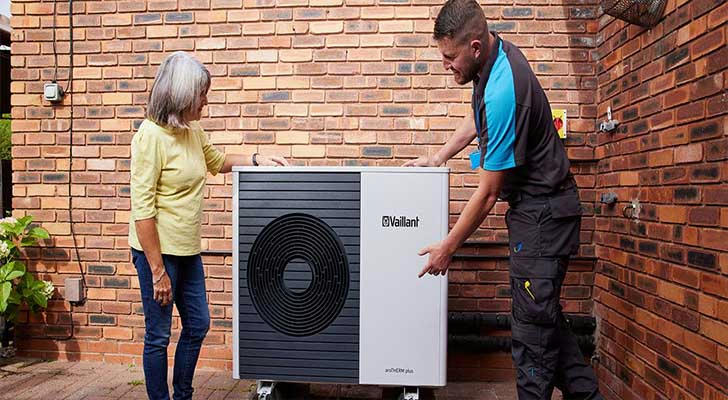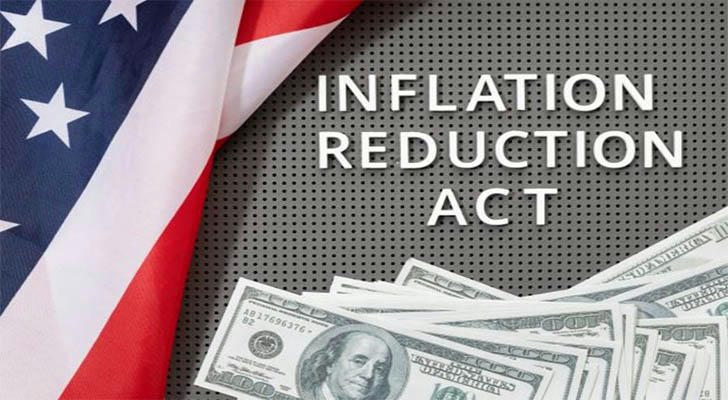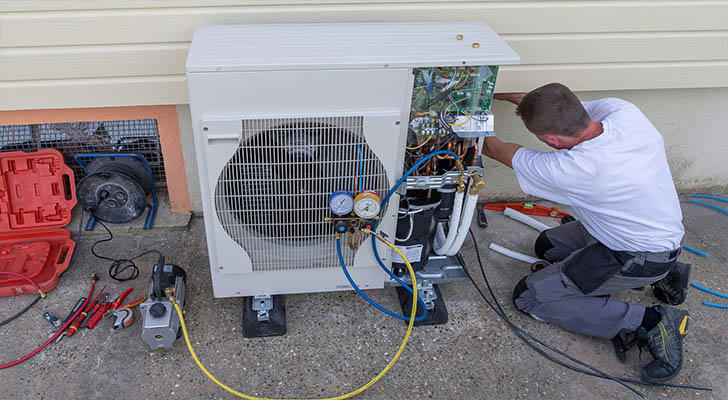How can I get heat pump installed for free through the Inflation Reduction Act?
The Inflation Reduction Act (IRA), offers substantial incentives to homeowners making energy-efficient home improvements, including heat pumps. Many households are eligible for rebates and tax credits to cover these upgrades. Americans can receive up to $14,000 in rebates under the IRA for installing heat pumps and other energy-saving upgrades. Here's a breakdown of how you can benefit from these provisions and potentially get a heat pump installed for free through the IRA:

What is the Inflation Reduction Act?
The Inflation Reduction Act (IRA) is a landmark legislation focused on addressing climate change by providing incentives for clean energy and energy-efficient home improvements. A central aspect of the IRA is promoting the adoption of energy-saving technologies like heat pumps. These devices help homeowners reduce their carbon footprint by providing efficient heating and cooling without the heavy reliance on fossil fuels.
The act primarily targets low- and middle-income households, offering them incentives to reduce their energy consumption, leading to lower utility bills and a smaller carbon footprint.
How the IRA Supports Heat Pump Installation
There are two major types of financial support available under the IRA for homeowners seeking to install heat pumps:
Rebates: Direct discounts or rebates for the upfront costs of heat pump installation.
Tax Credits: Tax incentives that can be claimed after installation when filing taxes.
1. Rebates for Low- and Moderate-Income Households
The IRA provides rebates that can cover up to 100% of the cost of heat pump installation for low- and moderate-income households. For example:
Low-income households (earning less than 80% of the area median income) are eligible for rebates covering the full cost of the heat pump.
Moderate-income households (earning between 80% and 150% of the area median income) can receive rebates covering up to 50% of the cost of the installation.
This initiative makes energy-efficient upgrades accessible to many households that might otherwise find them too expensive.
2. Tax Credits
Homeowners not eligible for the full rebate may still qualify for the IRA’s 30% tax credit for energy-efficient home improvements. This credit applies to heat pumps, solar panels, and other energy-saving upgrades. With a maximum tax credit of $2,000 for heat pumps, this option provides significant financial relief to homeowners who opt for greener energy systems.

Eligibility Criteria
To qualify for IRA rebates and tax credits, homeowners must meet certain eligibility criteria:
Income Level: Low- and moderate-income households receive the most generous benefits. Households with incomes above 150% of the area median income (AMI) may only qualify for the tax credit.
State Participation: States play a key role in administering IRA rebates. Homeowners should check with their local state energy offices to see what programs are available.
Primary Residence: Rebates and tax credits are generally limited to primary residences, excluding investment or rental properties.
Certified Equipment and Installers: To qualify for rebates, heat pumps must meet federal efficiency standards, and installations must be done by certified contractors.
Inflation Reduction Act (IRA) Rebate: Up to $14,000
Under the IRA, Americans can receive up to $14,000 in rebates for making energy-saving home upgrades. This cap covers a range of energy-efficient improvements, including heat pumps, insulation, and upgraded electrical systems.
The $14,000 total may be split across multiple projects, but homeowners can still save significantly on the cost of installing a heat pump, especially if they qualify for the full rebate. By reducing the cost of upfront investments, the IRA ensures more households can benefit from efficient, green energy solutions without financial strain.
The Process of Getting a Heat Pump Installed for Free
Here’s how to navigate the IRA’s rebate and tax credit programs to get a heat pump installed for free or at a greatly reduced cost:
1. Determine Eligibility
First, assess whether your household qualifies for a rebate by comparing your income to the area median income (AMI). Federal or state databases can help determine your eligibility.
2. Research Available Programs in Your State
Since each state administers the IRA’s rebate program, explore your state’s energy rebate options by contacting your state energy department or local utility provider.
3. Apply for Pre-Approval
Once you’ve confirmed eligibility, apply for pre-approval to ensure the rebate funds are available before starting the project. Many programs require this step to guarantee funding for heat pump installations.
4. Hire a Certified Installer
To claim the rebate, the installation must be completed by a certified contractor. Make sure the heat pump meets federal efficiency standards and that the contractor is familiar with the IRA’s rebate program.
5. Install the Heat Pump
After receiving pre-approval and hiring a certified installer, proceed with the installation. Depending on your eligibility, the rebate may cover up to 100% of the costs, allowing for a free installation.
6. Claim Your Rebate or Tax Credit
After installation, you’ll need to submit documentation to receive the rebate. If you’re claiming the tax credit, keep the receipts and documents for your next federal tax filing.
Case Study: Jennifer’s Free Heat Pump Installation
Consider the case of Jennifer, a single mother in Pennsylvania. Jennifer's home had an outdated HVAC system that struggled to keep her house warm in the winter. Her energy bills were high, and she was looking for a more efficient solution. After hearing about the IRA’s heat pump rebates, she checked her household’s income, which fell below 80% of her area’s median income, making her eligible for a 100% rebate.
She applied for pre-approval, contacted her state’s energy department, and was approved for a full rebate. Jennifer worked with a certified contractor, who helped her navigate the process and installed an energy-efficient heat pump. The entire installation, worth over $10,000, was covered by the rebate, reducing her energy bills and providing her home with reliable heating and cooling.
Jennifer’s story demonstrates how households can benefit from the IRA’s incentives to make homes more energy-efficient without bearing heavy financial burdens.

Conclusion
The Inflation Reduction Act provides substantial financial support for homeowners seeking to reduce energy consumption and embrace greener technologies. With rebates covering up to $14,000, low- and moderate-income households can install heat pumps and other energy-efficient improvements for free or at a reduced cost.
By following the eligibility steps and securing pre-approval, homeowners can upgrade their homes, lower utility bills, and contribute to a cleaner environment. The IRA ensures that more households, like Jennifer’s, can access energy-saving solutions without upfront costs, making green technology more accessible and practical for everyone.
